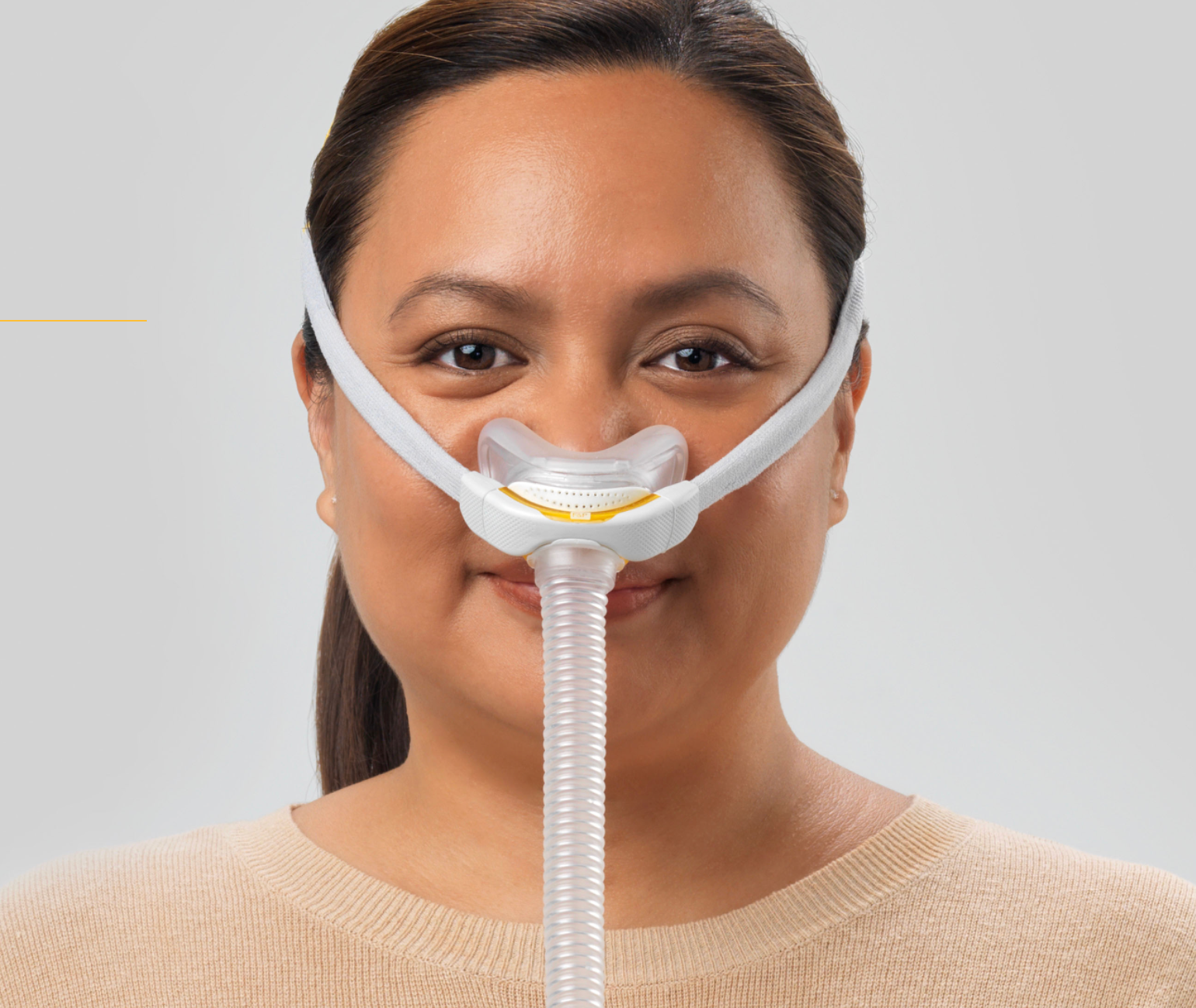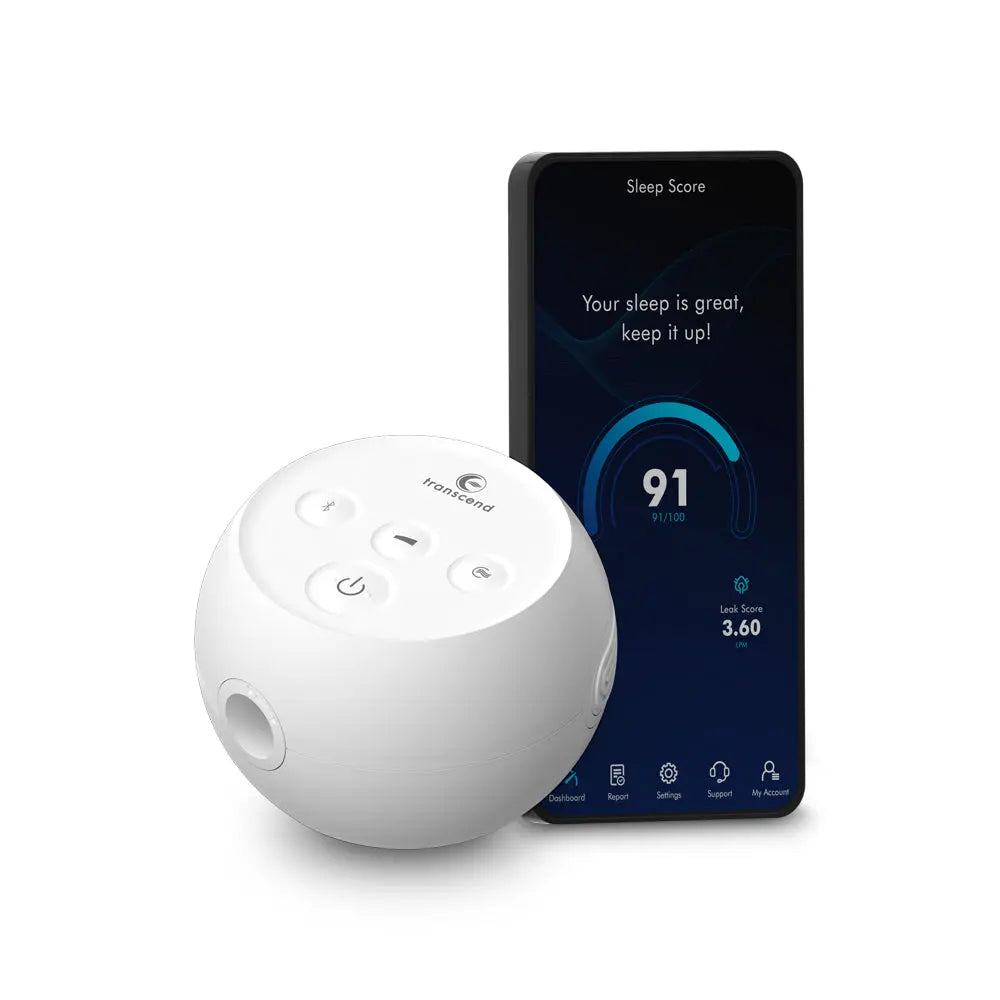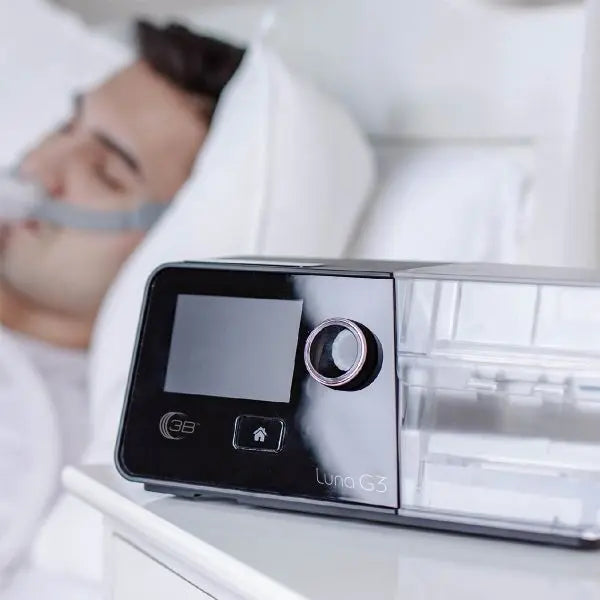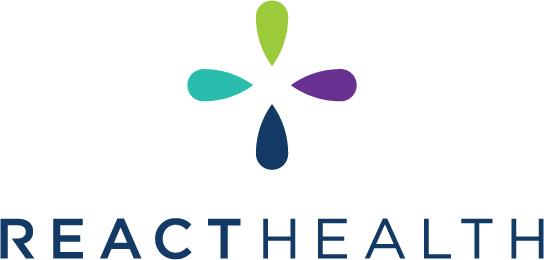Understanding Sleep Apnea: Causes, Types, Age Factors, CPAP Dependency, and Holistic Lifestyle Solutions
Introduction: The Silent Thief of Sleep
Imagine waking up exhausted, day after day, despite “sleeping” for hours. Your partner complains about your snoring, your focus wanes, and your energy tanks. This is the reality for millions grappling with sleep apnea—a disorder where breathing halts repeatedly during sleep, sometimes hundreds of times a night. Far from a mere nuisance, it’s a gateway to heart disease, diabetes, depression, and worse. Yet, it’s often cloaked in mystery. What causes these nightly interruptions? Who’s most at risk? And must you tether yourself to a CPAP machine forever?
This isn’t a short story—it’s a deep dive, a 10,000-word odyssey into sleep apnea’s causes, its grip across age groups, its varied forms, and the burning question of CPAP dependency. Beyond the machine, we’ll explore lifestyle solutions that can lighten the load or even set you free. Whether you’re newly diagnosed, supporting a loved one, or just curious, this guide is your roadmap to understanding and mastering sleep apnea. Let’s start by peeling back the layers of what sets it off.
What Causes Sleep Apnea?
Sleep apnea isn’t a single-note condition—it’s a symphony of biological, structural, and lifestyle factors playing out in your body. To tackle it, we need to know the players. Here’s the comprehensive breakdown:
Obstructive Sleep Apnea (OSA): The Airway Blockade
OSA dominates the sleep apnea landscape, accounting for 80-90% of cases. It happens when the upper airway collapses or narrows during sleep, choking off airflow. What drives this collapse?
-
Excess Weight and Obesity:
Fat isn’t just a number on the scale—it’s a physical force. Excess weight, especially around the neck and throat, adds pressure to the airway. A neck circumference over 17 inches for men or 16 for women signals heightened risk. Studies, like those from the Wisconsin Sleep Cohort, show obesity boosts OSA odds by 50% or more. Why? Fatty tissue bulks up the tongue, soft palate, and pharyngeal walls, shrinking the breathing tube when you lie down. Even a modest 10% weight gain can spike apnea events sixfold. -
Anatomical Quirks:
Your body’s blueprint matters. A naturally narrow throat—whether from a small jaw (retrognathia), a recessed chin, or a thick neck—sets the stage. Large tonsils or adenoids, especially in kids, can clog the works. A deviated nasal septum or chronic congestion adds resistance, forcing the airway to work harder. For some, it’s a perfect storm: a big tongue, floppy soft palate, and tight quarters, all conspiring to block breath. -
Muscle Tone and Relaxation:
Sleep is a relaxant—muscles loosen, including those guarding your throat. In OSA, this relaxation oversteps, letting the airway flop shut. Alcohol, sedatives, and even aging amplify this effect, weakening muscle control. Smokers face a triple whammy: inflammation swells tissues, nicotine disrupts sleep cycles, and muscle tone takes a hit. -
Positional Factors:
Gravity’s a silent partner. Lying on your back lets the tongue and soft tissues slide backward, pinching the airway. For some, OSA only strikes in this position—a clue to simpler fixes.
Central Sleep Apnea (CSA): The Brain’s Misfire
CSA is rarer, subtler, and trickier. Here, the airway’s open, but the brain forgets to tell your diaphragm to breathe. What’s behind this glitch?
-
Neurological Conditions:
Strokes, brain injuries, or diseases like Parkinson’s can scramble the brainstem’s respiratory signals. It’s not about blockage—it’s about miscommunication. Opioid use, too, can suppress breathing cues, a growing CSA trigger amid painkiller reliance. -
Heart and Lung Issues:
Congestive heart failure often pairs with CSA, thanks to unstable oxygen and carbon dioxide levels. Cheyne-Stokes breathing—a waxing-waning pattern—marks this duo. Chronic lung diseases or high-altitude living (think 8,000+ feet) can destabilize breathing control, too. -
Idiopathic Cases:
Sometimes, CSA just happens—no clear cause. It’s a frustrating wildcard, often needing advanced diagnostics to untangle.
Complex Sleep Apnea: The Hybrid Challenge
Complex (or treatment-emergent) sleep apnea blends OSA and CSA. It often surfaces when CPAP fixes the obstruction, only to reveal a central breathing hiccup. Causes overlap—obesity might kick off OSA, while heart issues or meds nudge CSA into play. It’s a puzzle, demanding tailored solutions.
Universal Risk Factors
-
Genetics:
Family history isn’t fate, but it’s a nudge. If your parents had sleep apnea, your airway shape or brain wiring might follow suit. Twin studies peg heritability at 30-40%. -
Gender:
Men face double or triple the OSA risk—hormones like testosterone may relax muscles more. Post-menopause, women catch up as estrogen’s protective effect fades. -
Age:
Muscle tone slips with time, and fat accumulates. By 50, your risk doubles; by 65, it’s a coin toss. -
Lifestyle Choices:
Smoking irritates airways, alcohol numbs muscle control, and sedentary habits pile on pounds. Each choice stacks the deck.
The Domino Effect
One cause often triggers others. Obesity narrows the airway, fatigue from poor sleep slows metabolism, and stress from exhaustion drives comfort eating. It’s a cycle—understanding it is step one to breaking it.
Will I Have to Be on a CPAP Machine All My Life?
The CPAP—Continuous Positive Airway Pressure—machine is a sleep apnea icon, pumping air to prop open your airway. It’s effective, but the mask, noise, and tethering spark a big question: am I stuck with this forever? The answer’s nuanced, hinging on your apnea’s roots and your willingness to adapt.
When CPAP Is Likely Permanent
-
Fixed Structural Issues:
If your airway’s narrow by design—small jaw, thick neck, or oversized tissues—no lifestyle tweak fully fixes it. Surgery might, but for many, CPAP’s the steady hand keeping nights safe. Severe OSA (30+ events hourly) often falls here, especially with genetic underpinnings. -
Irreversible CSA Causes:
Brain damage from stroke or progressive heart failure can lock in CSA. CPAP (or its cousin, BiPAP) becomes a lifeline, stabilizing breathing when the body can’t. -
Comfort and Compliance:
Some grow to love CPAP—energy soars, risks drop. Why ditch it if it works? Studies show 70% of severe cases stick with it long-term.
When CPAP Might Fade Out
-
Weight Loss Wins:
Obesity-driven OSA can retreat with weight loss. A 10-15% drop in body weight slashes apnea events by 26-50%, per the American Journal of Respiratory Medicine. Lose enough, and mild cases might vanish. One study tracked a 40-year-old man who shed 50 pounds—his apnea-hypopnea index (AHI) fell from 20 to 4, kissing CPAP goodbye. -
Surgical Solutions:
- Tonsillectomy/Adenoidectomy: Kids often outgrow apnea post-surgery. Adults with big tonsils see similar wins.
- Maxillomandibular Advancement (MMA): Repositioning the jaw widens the airway—success rates top 85% for moderate cases.
-
UPPP (Uvulopalatopharyngoplasty): Trimming throat tissue helps some, though less reliably.
Surgery’s a gamble—effective for structural fixes, not lifestyle ones.
-
Age and Hormones:
Post-menopause OSA spikes in women but can ease with hormone therapy or time. Kids may outgrow it as airways mature.
Alternatives to CPAP
-
Oral Appliances:
Mandibular advancement devices (MADs) nudge the jaw forward, opening the airway. Great for mild-moderate OSA—70% success rate, less invasive than CPAP. -
Positional Therapy:
Back-sleeping triggers OSA in 60% of cases. Side-sleeping aids (pillows, vests) can cut reliance on machines. -
Nerve Stimulation:
Hypoglossal nerve stimulators—a pacemaker-like implant—zap throat muscles awake. FDA-approved since 2014, it’s a game-changer for CPAP dropouts. -
Breathing Exercises:
Myofunctional therapy (tongue and throat drills) boosts muscle tone, trimming AHI by 50% in small studies.
The Reality Check
CPAP’s not a curse—it’s a tool. Reversibility depends on root causes and effort. A 55-year-old with genetic OSA might lean on it lifelong; a 35-year-old who drops 30 pounds might not. Regular sleep studies track progress—your doctor’s your co-pilot. For many, it’s a bridge, not a destination.
What Age Groups Get Sleep Apnea?
Sleep apnea doesn’t care about your birth year, but its flavor and frequency shift across life’s chapters. Let’s explore who’s hit, how, and why.
Infants and Children (0-18)
- Prevalence: 1-5% of kids, peaking at 2-8 years.
- Causes: Enlarged tonsils/adenoids (80% of cases), obesity (rising with childhood rates), or craniofacial issues (e.g., Down syndrome). Premature babies face higher CSA odds from immature brainstems.
- Signs: Snoring, mouth-breathing, bedwetting, ADHD-like hyperactivity, slow growth. Parents often miss it—kids don’t always wake gasping.
- Impact: Untreated, it stunts learning and health. A 2015 study linked pediatric OSA to a 6-point IQ drop.
- Fixes: Tonsillectomy cures 75-90% of cases. Weight management or CPAP helps the rest.
Young Adults (18-30)
- Prevalence: 3-7%, often underdiagnosed.
- Causes: Obesity creeps in, especially post-college. Smoking, drinking, and small jaws (braces generation) play roles. Rare CSA ties to early heart issues or drugs.
- Signs: Fatigue blamed on “life,” loud snoring, morning headaches. Partners notice first.
- Impact: Career and relationships suffer—drowsiness doubles crash risk.
- Fixes: Lifestyle shifts (quitting smoking, fitness) often nip it early. Oral appliances shine here.
Middle Age (30-60)
- Prevalence: 10-17%, peaking here.
- Causes: Weight gain, muscle laxity, and hormonal shifts (menopause for women) dominate. Men hit hardest—testosterone relaxes airways. CSA rises with heart disease or strokes.
- Signs: Snoring escalates, daytime naps fail, hypertension creeps in.
- Impact: Heart attack risk triples; diabetes odds soar. A 2018 study pegged 40% of midlife hypertension to untreated OSA.
- Fixes: CPAP rules, but weight loss and surgery gain traction.
Seniors (60+)
- Prevalence: 15-20%, possibly higher—screening lags.
- Causes: Aging sags throat muscles, fat redistributes, and comorbidities (heart failure, dementia) fuel CSA. Medications like sedatives tip the scales.
- Signs: Subtle—fatigue blends with “old age.” Snoring may quiet as muscle mass drops.
- Impact: Falls, cognitive decline, and stroke risk spike. CSA doubles mortality odds in heart patients.
- Fixes: CPAP’s common, but BiPAP or oxygen suits CSA. Positional aids help milder cases.
Age as a Lens
Kids outgrow it with surgery; young adults catch it early; midlifers battle peak severity; seniors juggle it with frailty. Screening must adapt—polysomnography for all, tailored to life stage.
Different Kinds of Sleep Apnea (1,500 words)
Sleep apnea isn’t one-size-fits-all. Three types—obstructive, central, and complex—shape its story.
Obstructive Sleep Apnea (OSA)
- What It Is: Airway blockage from collapsed tissues.
- Hallmarks: Loud snoring, choking gasps, restless sleep.
- Severity: Mild (5-15 events/hour), moderate (15-30), severe (30+).
- Who Gets It: Overweight folks, big-necked men, post-menopausal women, kids with tonsils.
- Why It Happens: Fat, anatomy, or lax muscles—often all three.
- Diagnosis: Sleep study tracks AHI, oxygen dips.
Central Sleep Apnea (CSA)
- What It Is: Brain skips breathing signals.
- Hallmarks: Quiet pauses, shallow breaths, no struggle.
- Severity: Same AHI scale, but oxygen stability’s key.
- Who Gets It: Heart failure patients, stroke survivors, high-altitude dwellers.
- Why It Happens: Neurological hiccups or unstable blood gases.
- Diagnosis: Polysomnography spots absent effort—no chest movement.
Complex Sleep Apnea Syndrome
- What It Is: OSA meets CSA, often CPAP-triggered.
- Hallmarks: OSA symptoms shift to CSA patterns on treatment.
- Severity: Tricky—varies by dominant type.
- Who Gets It: OSA patients with hidden CSA tendencies.
- Why It Happens: CPAP fixes blockage, but brain lags.
- Diagnosis: Titration studies reveal it—CSA emerges under pressure.
Beyond the Labels
Severity dictates urgency—mild might mean lifestyle tweaks, severe screams CPAP. Type guides therapy—OSA loves airflow, CSA needs brain support. Know yours to fight it right.
How I Can Lead a Healthy Lifestyle Other Than Using CPAP
CPAP’s a champ, but it’s not your only weapon. Lifestyle shifts can ease apnea’s grip—sometimes enough to ditch the machine. Here’s your playbook:
Weight Management: The Heavy Hitter
- Why It Works: Fat narrows airways; losing it widens them. A 10% weight drop cuts AHI by 26%, per a 2013 study.
-
How To Do It:
- Diet: Mediterranean style—veggies, lean protein (fish, chicken), olive oil. Ditch sugar and processed carbs; they pack pounds and inflame tissues.
- Portion Control: Smaller plates, mindful eating—stop at 80% full.
- Consistency: Aim for 1-2 pounds weekly; crash diets rebound.
- Real Win: A 45-year-old woman dropped 40 pounds—her AHI fell from 18 to 6, CPAP optional.
Exercise: Beyond the Scale
- Why It Works: Cardio and strength training boost metabolism and airway tone. Yoga’s breathing drills cut AHI by 22% in trials.
-
How To Do It:
- Daily Dose: 30 minutes—brisk walking, cycling, swimming.
- Throat Toning: Sing, gargle, or blow balloons—5 minutes daily strengthens pharyngeal muscles.
- Mix It Up: Weights twice weekly; flexibility (yoga) thrice.
- Real Win: A 50-year-old man added yoga—his snoring halved, AHI dropped 10 points.
Sleep Hygiene: Position and Patterns
- Why It Works: Back-sleeping flops the airway; side-sleeping opens it. Regularity syncs breathing rhythms.
-
How To Do It:
- Side Sleeping: Sew a tennis ball into your pajama back or use a body pillow.
- Head Elevation: Wedge pillow (30 degrees) lifts gravity’s burden.
- Routine: Bed at 10 PM, up at 6 AM—every day.
- Real Win: A 38-year-old switched positions—apnea events fell 40%.
Dietary Shifts: Fuel for Breathing
- Why It Works: Inflammation and mucus clog airways; smart eating clears them.
-
How To Do It:
- Cut Booze: Alcohol relaxes muscles—skip it 4 hours pre-bed.
- Anti-Inflammatory Foods: Berries, nuts, fatty fish—reduce swelling.
- Hydrate: 8-10 cups water daily thins mucus.
- Real Win: A 60-year-old ditched wine—his AHI halved in a month.
Smoking Cessation: Clear the Air
- Why It Works: Smoking swells tissues, disrupts sleep. Quitting reverses it—risk drops 30% in a year.
- How To Do It: Patches, gum, or counseling—pick your path.
- Real Win: A 42-year-old ex-smoker saw AHI fall from 25 to 12 in 6 months.
Stress Management: Calm the Storm
- Why It Works: Stress spikes cortisol, fragmenting sleep. Relaxation steadies breathing.
-
How To Do It:
- Meditation: 10 minutes daily—focus on breath.
- Deep Breathing: 4-7-8 method (inhale 4, hold 7, exhale 8) pre-bed.
- Therapy: CBT for insomnia tackles root anxiety.
- Real Win: A 35-year-old meditated—sleep quality jumped, CPAP use dropped.
The Big Picture
Mix these—lose 20 pounds, sleep on your side, quit smoking—and mild apnea might vanish. Severe cases lighten, cutting CPAP hours. Track with apps or journals; retest with a sleep study annually.
Conclusion: Your Sleep, Your Power
Sleep apnea’s a beast, but it’s not unbeatable. Its causes—fat, genes, brain glitches—span ages and types, from snoring kids to silent seniors. CPAP’s a rockstar, but not a life sentence—weight loss, surgery, or grit can rewrite your story. Beyond the machine, lifestyle’s your lever: shed pounds, move more, eat smart, rest right. This dive arms you with science and steps to fight back. Test, tweak, and talk to your doc—better sleep’s within reach, with or without that humming box.
Bibliography
- Peppard, P. E., et al. (2013). "Increased Prevalence of Sleep-Disordered Breathing in Adults." American Journal of Epidemiology.
- Young, T., et al. (2002). "Epidemiology of Obstructive Sleep Apnea." American Journal of Respiratory and Critical Care Medicine.
- Eckert, D. J., & Malhotra, A. (2008). "Pathophysiology of Adult Obstructive Sleep Apnea." Proceedings of the American Thoracic Society.
- Schwartz, A. R., et al. (2008). "Obesity and Obstructive Sleep Apnea." Proceedings of the American Thoracic Society.
- American Academy of Sleep Medicine. (2014). "International Classification of Sleep Disorders."
- Foster, G. D., et al. (2009). "A Randomized Study on the Effect of Weight Loss on OSA." Archives of Internal Medicine.
- Strollo, P. J., et al. (2014). "Upper-Airway Stimulation for OSA." New England Journal of Medicine.








Leave a comment
This site is protected by hCaptcha and the hCaptcha Privacy Policy and Terms of Service apply.